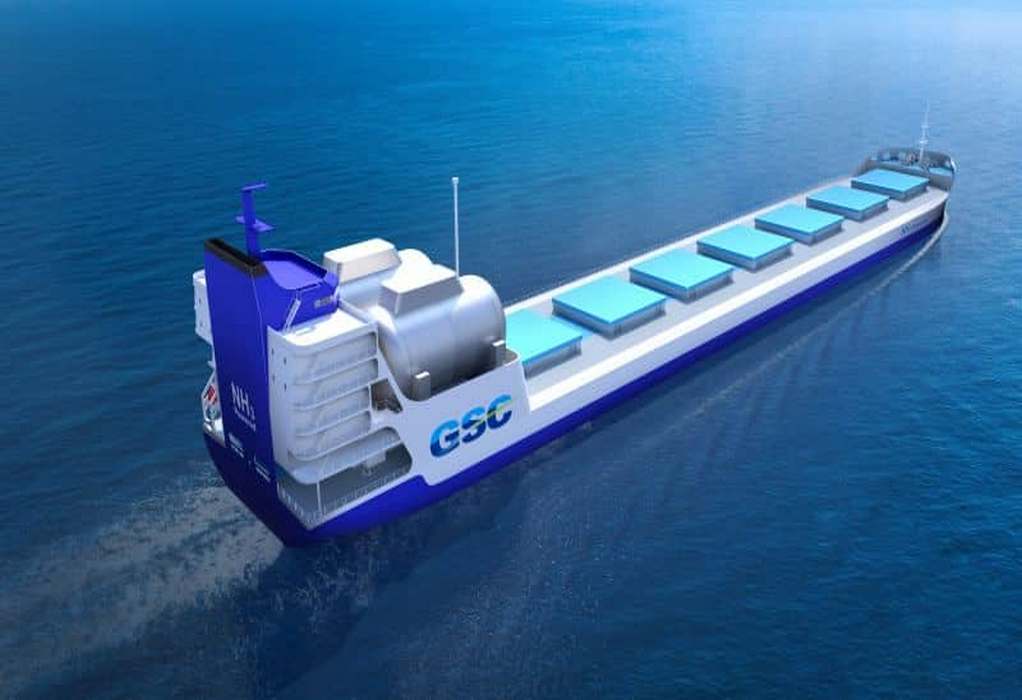The shipping sector needs to adopt blue ammonia as part of the bunker fuel mix to achieve timely decarbonisation, and substantial growth of CO2 storage infrastructure could support this in the coming years, according to a study by Denmark’s Maersk Mc-Kinney Moller Center for Zero Carbon Shipping.
Some shipowners are expecting methanol to play a key role in the sector’s bid to decarbonise — one of the research body’s founders, Maersk, has ramped up orders for methanol-ready vessels in recent years and is involved in the development of e-methanol production facilities including in Florida and Copenhagen. But producers of renewable power-based fuels will not be able to supply enough affordable volumes at pace for the industry to meet its decarbonisation goals, which means ammonia made from gas with carbon capture and storage (CCS) will need to play a part as well, the report’s authors said.
The report warns that industry cannot afford to wait for only renewable fuels. The transition to lower carbon bunker fuels must start “within the current decade” to gain the necessary momentum to meet the shipping sector’s 2050 decarbonisation goal, it said. Blue ammonia will become available in “significant quantities by 2027”, with current estimates putting supply at around 8mn t/yr in 2027-28, it added.
The report’s authors named Norway, North America, the Arabian Gulf, Australia, Malaysia and Indonesia as optimal locations because of their low-cost natural gas supply and favourable geological conditions for storing CO2. While companies have developed technology to capture up to 95pc of the CO2 emissions in the blue ammonia production process, the researchers noted the importance of having sufficient space to store the CO2.
To stick to net zero emissions targets, the maritime industry may need around 34mn t/yr of blue ammonia by 2030, for which it would need to capture and store 50mn t/y CO2, according to the authors. Based on current projections, this goal could be comfortably met. Projects under development could provide nearly 250mn t/yr of CO2 storage by 2030, the authors said. And in their “high case” scenario, which also includes announced projects, this rises to over 600mn t/yr. But the report notes that “supply chain risks could inhibit achieving these infrastructure capacities within the timeframe”, while the capacity would be shared across all industries and would not be limited to hydrogen or ammonia production alone.
Tags: Ammonia, Decarbonisation, Shipping Industry



Recent Posts
Himachal Pradesh Plans Major Boost to Public Transport with E-Buses and Digital Upgrades
Ammonia-Fueled Container Feeder Design Marks Progress in Maritime Decarbonisation
ABS Develops Industry-Leading EV Battery Fire Simulation Modeling
Wilhelmsen Ships Service Joins the Maritime Battery Forum to Accelerate Maritime Electrification
Indian Student Team Wins Communication Prize at Monaco Energy Boat Challenge 2025
Babcock’s LGE Business Secures Contract for Marine Ammonia Fuel System to Advance Shipping Decarbonisation
Associated Terminals Deploys Liebherr’s All-Electric Cranes in Landmark Move Toward Cleaner Cargo Handling
Sanmar delivers fully electric emissions-free tug to major global operator Svitzer